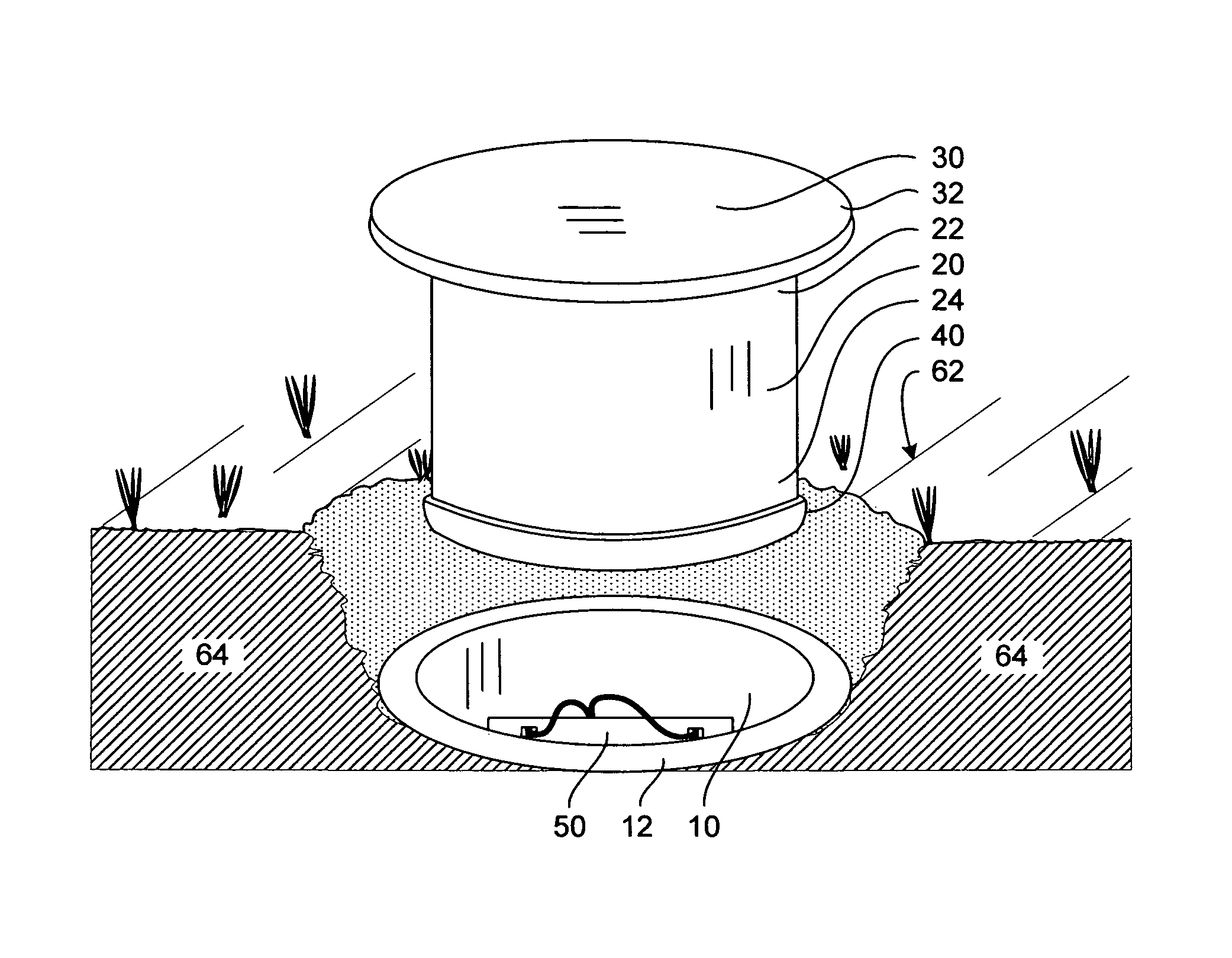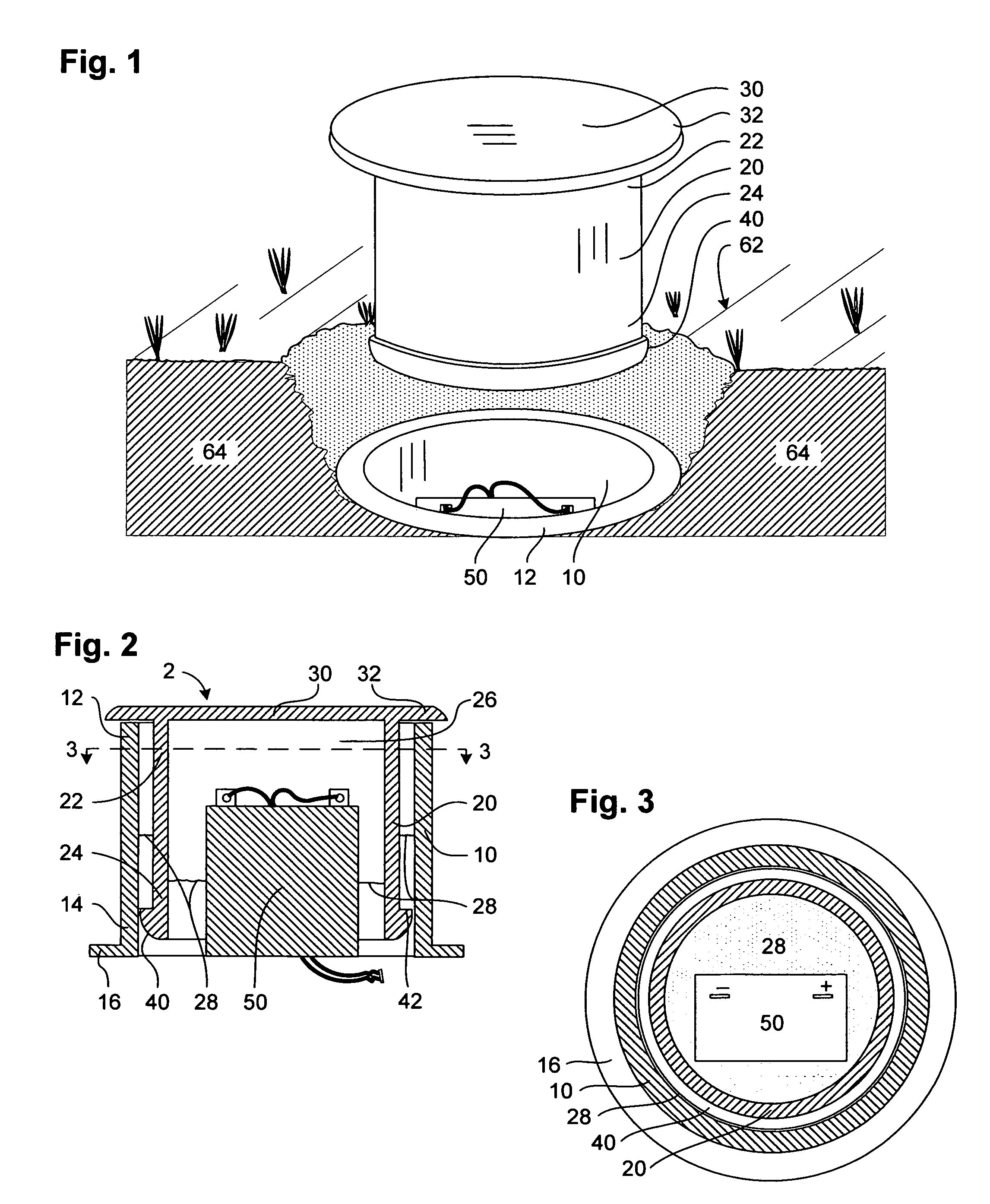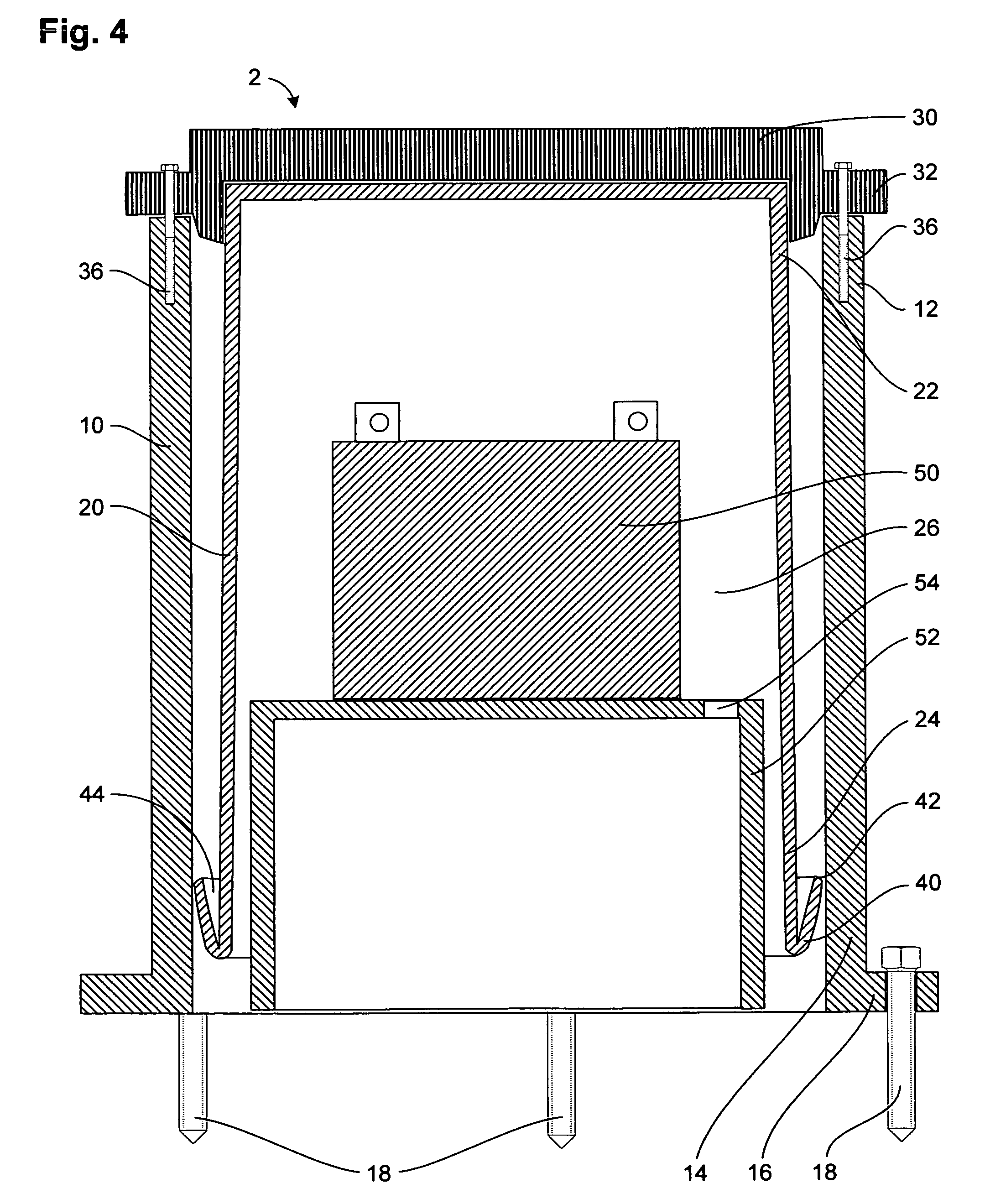Underground battery container system
a battery container and container technology, applied in the direction of cable installation in the cable chamber, cell component details, transportation and packaging, etc., can solve the problem of the most difficult to remove excess dirt, and achieve the effect of reducing the amount of dirt that falls, reducing the amount of excess hydrogen build-up, and simplifying the maintenance procedur
- Summary
- Abstract
- Description
- Claims
- Application Information
AI Technical Summary
Benefits of technology
Problems solved by technology
Method used
Image
Examples
Embodiment Construction
[0040]This detailed description will begin by describing a battery container system of the present invention that includes an enclosure, a sleeve, a cover and a rechargeable battery. Following will be a description of a bottom portion of the sleeve including the preferred ridge, which is characterized by an edge and a channel for scraping and collecting dirt and debris away form the inside of the enclosure. Finally, there will be a description of how to incorporate battery platforms and electronics into the battery container system.
[0041]The enclosure is a simple structure having closed sturdy walls that are substantially vertical. As seen in FIGS. 1-5, a battery container system 2 preferably has an enclosure 10 that is cylindrical in shape, having a top portion 12 and a bottom portion 14, with a substantially uniform horizontal plane cross-section throughout. The preferred material is any of the various thermoplastic plastics, such as 0.08 inch (2 mm) thick polypropylene or polyvin...
PUM
 Login to View More
Login to View More Abstract
Description
Claims
Application Information
 Login to View More
Login to View More - R&D
- Intellectual Property
- Life Sciences
- Materials
- Tech Scout
- Unparalleled Data Quality
- Higher Quality Content
- 60% Fewer Hallucinations
Browse by: Latest US Patents, China's latest patents, Technical Efficacy Thesaurus, Application Domain, Technology Topic, Popular Technical Reports.
© 2025 PatSnap. All rights reserved.Legal|Privacy policy|Modern Slavery Act Transparency Statement|Sitemap|About US| Contact US: help@patsnap.com



